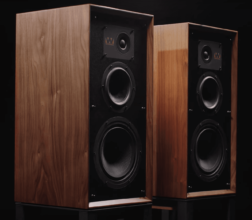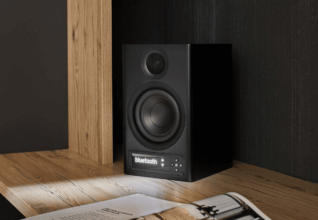UNISON RESEARCH MAX MINI Review – More Than Mini
The Unison Research Max Mini is big in many ways, Noel Keywood thinks.
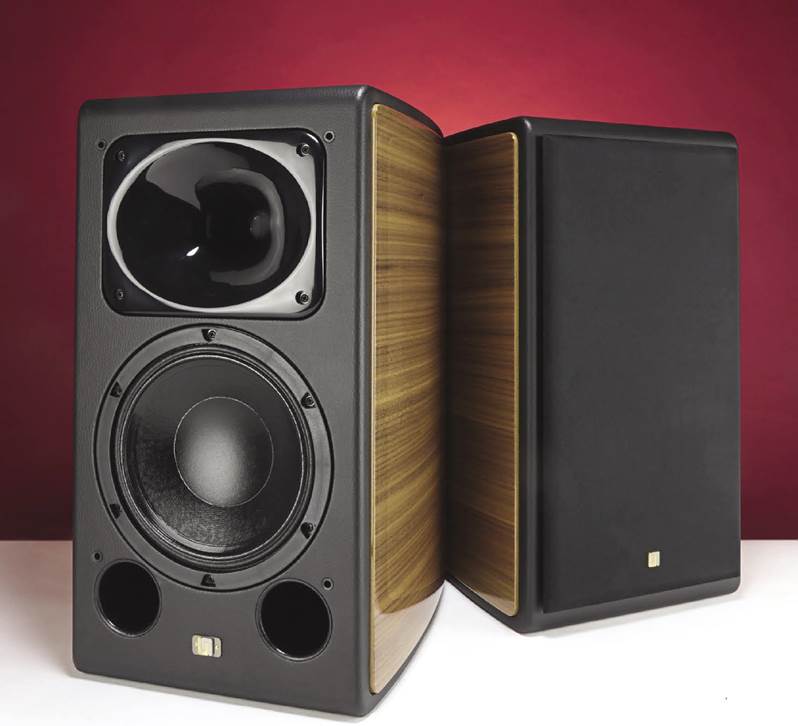
We’ve reviewed many Unison Research (Italy) valve amplifiers in the past, and they sounded lovely – silky, smooth, full-bodied, and atmospheric, in true valve style. Making the arrival of their Max Mini loudspeakers designed for valves welcome in our offices. Would they suit a valve amplifier is the obvious question? What does “Designed for valves” mean?
The Max Minis are heavy, weighing 15kg each. I found them challenging to lift. The cabinets are sizeable at 495mm high, 285mm wide, and 360mm deep, so you’d need a sturdy bookshelf for them. Stand mounting is more suitable, and that’s how I reviewed them. Just as Unison Researcsaysay, these loudspeakers deliver massive volume from a few Watts, as our measurements showed, but to achieve this using an unusual design approach impacts cost – a healthy.
Dominating the front panel is a large horn driven by a 1in (25mm) titanium dome tweeter that works from 1.5kHz up to 20kHz. Unison Research says, and our measurements confirm. A horn like this delivers very high volume from little input and is difficult to match into a bass unit in terms of sensitivity. To do so, Unison Research uses a large 8in (203mm) bass driver, which is loaded by what is a big volume cabinet to get sensitivity up to that of the horn. And it works, matching well enough down to 200Hz before deep bass falls away. Enter room.
“Images loomed large: the Max Minis constructed a massive sound stage”
In a medium to small room and placed close to a rear wall, the room will boost bass to give a balanced sound. So, although on the large side, the Max Mini is for medium to small rooms up to 16ft (circa 5m) long and for near-all placement. It may well be this is why they are labeled bookshelf designs and have ports on the front, not the rear.
Unison Research claims these
‘speakers produce a loud 93dB
from just one measly Watt of input – up to big Tannoy levels. Here’s where the Max Mini scores: it offers the sensitivity of a big floor stander in a compact cabinet – quite a feat. That means a specialist amplifier like a singleended 300B design delivering 9 Watts would suit, and so would a Quad Vena II solid-state design (45 Watts). Bigger amplifiers in the 100-watt herd would be fine with the volume turned down, but a loudspeaker as sensitive as this does not need such power. The claim “designed for valves” comes into focus here.
The cabinets are solidly built and superbly finished with a deep gloss lacquered veneer of Cherry, Walnut, or Mahogany. The front grille is removable and acoustically transparent, having no effect on the sound on or off. Wide dispersion makes positioning uncritical: they can point straight down the room or be toed in – no difference.
At the rear, a large toggle switch can be set at a center neutral position or down for SolidState and up for Valve. Centre and Solid-State gave identical results under measurement and listening, but Valve raised the lower midrange for a slightly warmer sound. It was a fairly subtle change, and I was happy enough with the central neutral position.
SOUND QUALITY
I ran the Max Mini first from our Creek Evolution 100A amplifier and then from our Icon Audio Stereo 30SE single-ended valve amplifier, so it got both solid-state and valve (tube) drive. Up front as a source was our Oppo BDP-205D CD player with its ESS90 18 DAC, linear power supply, and smooth sound. Hi-res came from a fully floating battery-driven Astell&Kern AKI20 portable player connected via the optical digital input. The cables were Chord Company Signature Reference for loudspeakers and Epic for interconnects.
At first, listen, the Max Minis were, by consensus in the office, sharp and edgy. We gave them a long run-in to smooth things out, and the edginess disappeared, but they are strongly mid band forward, so they remained vivid with our relatively relaxed Creek amplifier. Josefine Cronholm loomed large in front of me, singing Gates of Istanbul (CD) – so forward and clear it seemed someone had put a magnifying glass on her vocals.
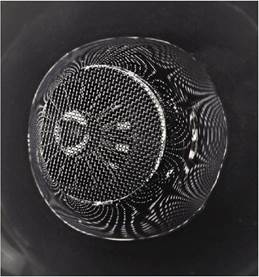
At the center of the horn lies a titanium dome tweeter surrounded by a protective grille.
This is a new balance: ‘speakers of yesteryear had a crossover dip that made them sound soft and easy; now a lift replaces the dip for a sound that’s dramatically forward. This makes the Max Minis different from what you may expect from valve-friendly loudspeakers: they are not in themselves soft or warm.
Set to ‘Solid-State’ and driven by our Creek, the deep bass from Bazouki in Gates of Istanbul that I know from this review track was on the light side in our large room, clean but lacking in low-end weight. In a smaller room however, meaning less than I 6ft long, room gain at low frequencies due to resonant modes in the bass region would lift this shortfall nicely to give a sense of balance and fast if not deep bass.
The big flared horn, with its wide dispersion, set up a capacious sound stage, one with a width that extended beyond the loudspeakers – and there was plenty of height, too. Images loomed large as a result: the Max Minis constructed a massive sound stage, just like the Klipsch R-51PM I reviewed in our April 2020 issue and also like big Tannoys.
Tannoys – like their Fyne Audio successors – fire treble out through the horn of a bass unit to build a massive sound stage – and the Max Minis perform a similar acoustic trick. Wide dispersion bounces sound off walls, floor, and ceiling (boundaries) to give a feeling of scale – and that’s what the Max Minis did for me. Great for classical music, in particular, the Chicago Symphony Orchestra fills the room with Mahler’s Symphony No.8, Veni Creator Spiritus (24/96).
I love big Tannoys, but violinist Rafael Todes (Allegri String Quartet) poked me in the eye – no ear! – with a brutal truth: “it sounds like singers are in a phone box”. I hadn’t noticed that. What Rafael identified was the known ‘cuppy’ sound of a midrange hor,n and just as this effect did not worry me with Tannoys, it did not with the Max Minis, but all the same, it was their drums and percussion in the Pink Panther Theme (CD) had a slightly enclosed sound. It’s not a major issue and a trade-off against high sensitivity, but there is a small amount that is all the same.
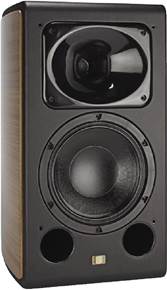
The large horn at the top gives wide dispersion and a large sound stage. It also provides high efficiency: little power is needed to go loud.
Switching to our Icon Audio Stereo 30SE singleended valve amplifier (4 Ohm) brought little change. There was the greater stage depth valves bring, a tad more warmth and body – and throwing the big rear switch to valve (tube) added to this effect, but I preferred the drier sound of Solid-State. Valve EQ is for bright transistor amplifiers, adding a bit of warmth – unnecessary for a valve amplifier.
CONCLUSION
The Unison Research Max Mini needs just a few Watts to go loud. It usually takes a big floor stander to do this, but this is a bookshelf loudspeaker, according to Unison Research, albeit you’ll need a strong bookshelf! Fast and forward in sound quality, throwing vocalists out into the room and making orchestras loom large on a massive sound stage, they’re sonically impressive.
With so much insight, plus a bright sound balance, a smooth amplifier, solid-state or valve, is required. This is a finely tuned and somewhat esoteric design, if at a price where there is plenty of competition from sensitive floor standers of less dramatic balance.

A large toggle switch on the rear panel selects Valve or Solid State EQ.
A single pair of gold-plated terminals accepts 4mm banana plugs, spades, or bare wire. Bi-wiring is not possible.
MEASURED PERFORMANCE
Our frequency response analysis of the Unison Research Max Mini shows a broadly flat characteristic across the audio band from 60Hz to 20kHz, within 3dB limits. Above 2kHz output is strong to 6kHz, giving more upper midband output than is usual, meaning the Max Mini will sound forward and bright against other loudspeakers.

The bass rolls down below 150Hz to best suit placement against a real wall. The forward firing ports, tuned to 60Hz (red, trace) will add some extra heft and power to low bass Cut-off below 50Hz is fast, there are no sub-sonics. This is not a bass-heavy design.
Sensitivity was very high for a compact loudspeaker, delivering 91.5dB sound pressure level at 1 meter, from 1 Watt input – comparable to big floor standers. Amplifiers of 9 Watts or more would suit, and 40 Watts is enough to go very loud.
Impedance was high at 9 Ohms when measured with pink noise, so the Max Mini is an easy load, undemanding of current.
Raised upper midband output will give a bright and forward sound. The Bass has been tailored for use close to a rear wall. Sensitivity is extraordinarily high; just a few Watts needed to go very loud.
VERDICT
MORE:





